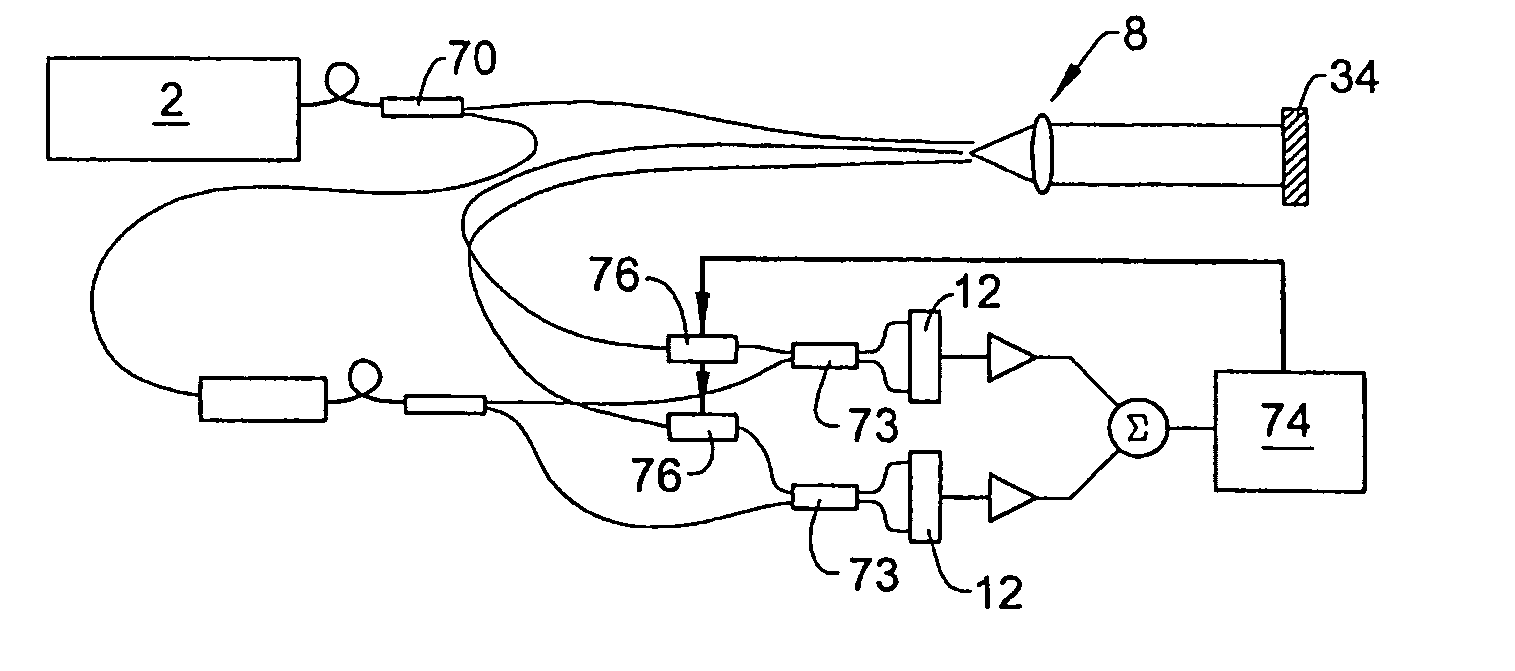Single Aperture Multiple Optical Waveguide Transceiver
a transceiver and optical waveguide technology, applied in the field of single aperture lidar and velocity measurement systems, can solve the problems of surface scattering impinging light, difficult at high pulse power, and real-world optical elements that do not behave ideally, so as to reduce back reflection, reduce coupling efficiency, and improve isolation
- Summary
- Abstract
- Description
- Claims
- Application Information
AI Technical Summary
Benefits of technology
Problems solved by technology
Method used
Image
Examples
Embodiment Construction
[0059]In accordance with the invention a unique single-aperture, multi-axial transceiver is provided that is particularly useful in a LIDAR system for detecting low velocities at increased ranges. FIG. 7 illustrates a simple biaxial version of the invention. In the embodiment of FIG. 7 the laser transmitter source 2 and the detector 12 share a single objective 8. The objective may comprise multiple optical elements, which may be refractive, reflective, diffractive, or a combination of all, as long as the combination provides the necessary imaging properties. A single optical element is preferred because fewer optical surfaces provide better isolation for the reasons described above with regard to FIG. 5.
[0060]The output aperture of the laser is preferably made small compared to the aperture of the objective 8, and it is placed at or near the focal plane of the objective to produce a substantially collimated output beam 4. In the embodiment of FIG. 7, the output of the laser 2 is dis...
PUM
| Property | Measurement | Unit |
|---|---|---|
| distance | aaaaa | aaaaa |
| diameter | aaaaa | aaaaa |
| wavelength | aaaaa | aaaaa |
Abstract
Description
Claims
Application Information
 Login to View More
Login to View More - R&D
- Intellectual Property
- Life Sciences
- Materials
- Tech Scout
- Unparalleled Data Quality
- Higher Quality Content
- 60% Fewer Hallucinations
Browse by: Latest US Patents, China's latest patents, Technical Efficacy Thesaurus, Application Domain, Technology Topic, Popular Technical Reports.
© 2025 PatSnap. All rights reserved.Legal|Privacy policy|Modern Slavery Act Transparency Statement|Sitemap|About US| Contact US: help@patsnap.com



